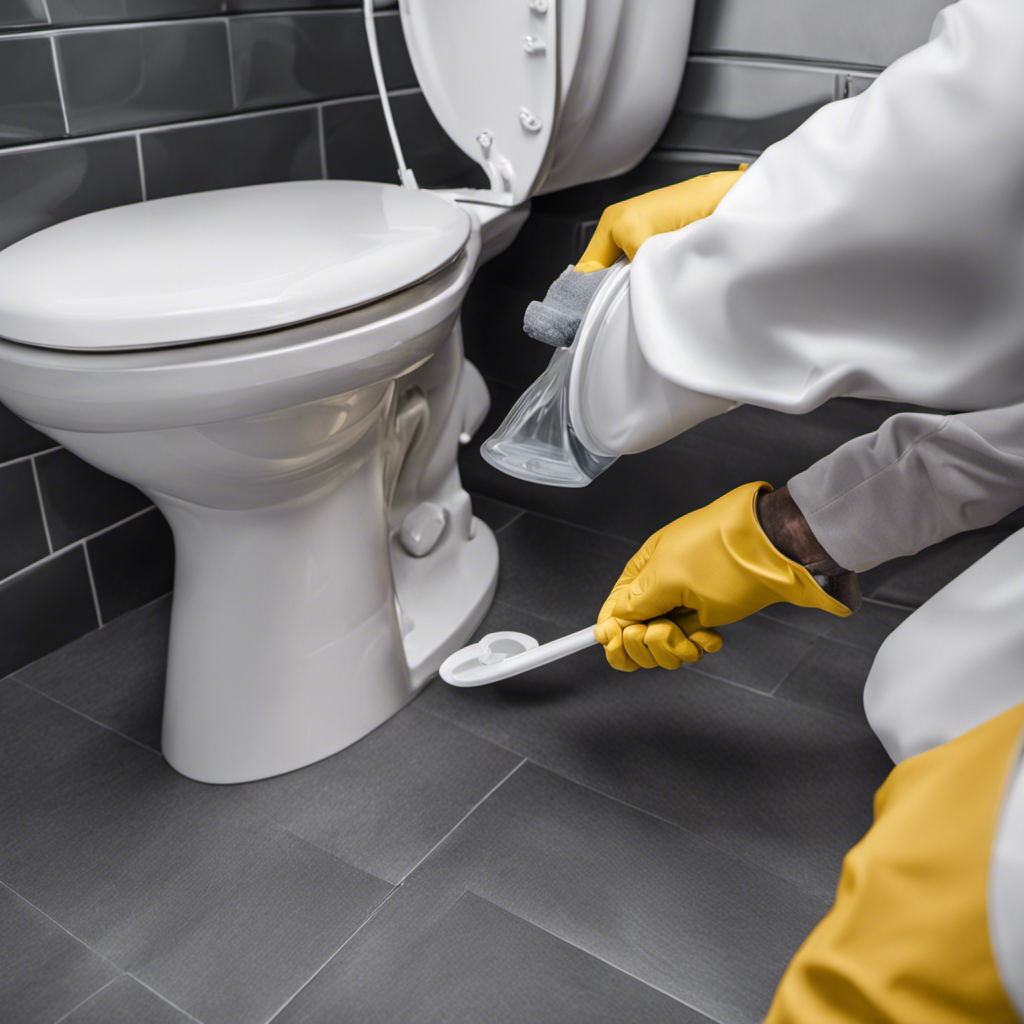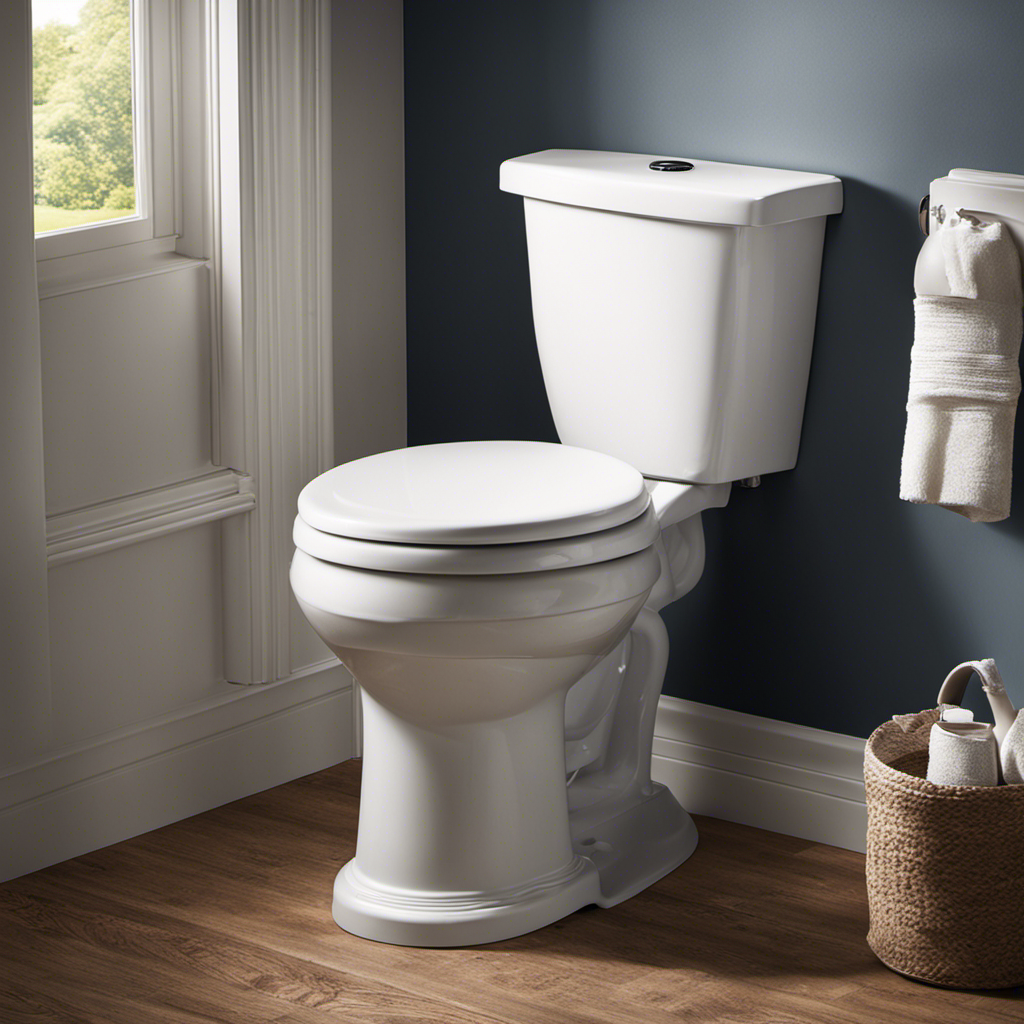I can’t believe how much water we waste every time we flush a toilet! Have you ever wondered just how many gallons it takes to flush?
Well, in this article, I’m going to dive deep into the world of toilet flushing and give you all the facts and figures you need to know. From the average gallons used per flush to water-saving toilet models and tips for reducing water consumption, we’ll cover it all.
So, let’s get started and find out just how much water we’re sending down the drain with every flush.
Key Takeaways
- On average, 1.6 gallons of water are used to flush a toilet.
- Water-saving toilet models require less water per flush, typically around 1.28 gallons or less.
- Using water-saving toilet models can significantly lower water bills over time.
- Installing a low-flow toilet or a dual-flush mechanism can reduce water consumption and environmental impact.
The Average Gallons Used per Flush
On average, you’ll use about 1.6 gallons of water to flush a toilet. This may seem like a small amount, but when you consider the number of times a toilet is flushed in a day, it adds up quickly.
Toilet water usage is a significant contributor to overall water consumption in households and has a substantial environmental impact. The excessive use of water for flushing not only depletes our freshwater resources but also puts a strain on wastewater treatment plants.
Additionally, the energy required to treat and transport this large volume of water contributes to greenhouse gas emissions.
To reduce the environmental impact of toilet water usage, it is important to explore water-saving options, such as installing low-flow toilets or using dual-flush systems that allow for varying levels of water usage depending on the type of waste being flushed.
Water-saving Toilet Models
You can save water by using newer toilet models that require less for each flush. These water efficient designs are not only better for the environment, but they also have a positive impact on water bills. Here are some benefits of using water-saving toilet models:
-
Reduced water consumption: Newer toilet models use advanced flushing mechanisms that require less water per flush, typically around 1.28 gallons or even less, compared to older models that can use up to 3 or 5 gallons per flush.
-
Dual flush options: Many water-saving toilets offer dual flush options, allowing you to choose between a full flush for solid waste and a half flush for liquid waste, further reducing water usage.
-
Improved flushing performance: Despite using less water, these toilet models are designed to provide efficient flushing performance, ensuring that waste is effectively removed with each flush.
-
Water bill savings: By reducing water consumption, water-saving toilet models can significantly lower your water bills over time.
-
Environmentally friendly: Using water-saving toilet models helps conserve water resources, reducing the strain on local water supplies and contributing to a more sustainable future.
Factors Affecting Flush Volume
Consider factors such as the age and design of your toilet when determining its water usage. The toilet flush mechanism plays a crucial role in determining the flush volume, which directly impacts your water bills.
Older toilets typically use more water per flush compared to newer models that are designed to be more water-efficient. The flush volume is measured in gallons and can range from 1.6 to 0.8 gallons per flush.
How to Calculate Flush Gallons
The age and design of your toilet can impact how much water it uses for each flush. Calculating water usage is an important step in understanding the environmental impact of your toilet. Here are five key factors to consider:
- Flush volume: Measure the amount of water used per flush, typically in gallons.
- Flush frequency: Determine how many times the toilet is flushed in a day.
- Occupancy rate: Consider the number of people using the toilet.
- Water-saving features: Check if your toilet has any water-saving mechanisms.
- Toilet age: Older toilets tend to use more water than newer models.
By considering these factors, you can accurately calculate the water usage of your toilet and assess its environmental impact.
Now, let’s explore some tips for reducing toilet water consumption.
Tips for Reducing Toilet Water Consumption
One effective way to decrease water usage in your bathroom is by installing a low-flow toilet. These eco-friendly toilet options are designed to use less water per flush compared to traditional toilets. A standard toilet can use up to 1.6 gallons of water per flush, while low-flow toilets use around 1.28 gallons or even less.
By making this simple swap, you can save a significant amount of water and reduce your environmental impact.
Additionally, you can make DIY water-saving modifications to your existing toilet. For example, you can install a dual-flush mechanism that allows you to choose between a full flush and a half flush, depending on the waste. This way, you can further reduce water consumption while maintaining the functionality of your toilet.
Conclusion
In conclusion, understanding the number of gallons it takes to flush a toilet is crucial for water conservation. By opting for water-saving toilet models and implementing simple tips like adjusting the float valve or installing a dual flush system, we can significantly reduce our water consumption.
Each gallon represents more than just a number; it symbolizes our responsibility to preserve our planet’s precious resources. Let’s make conscious choices and take small steps towards a more sustainable future.
Together, we can make a significant impact.










